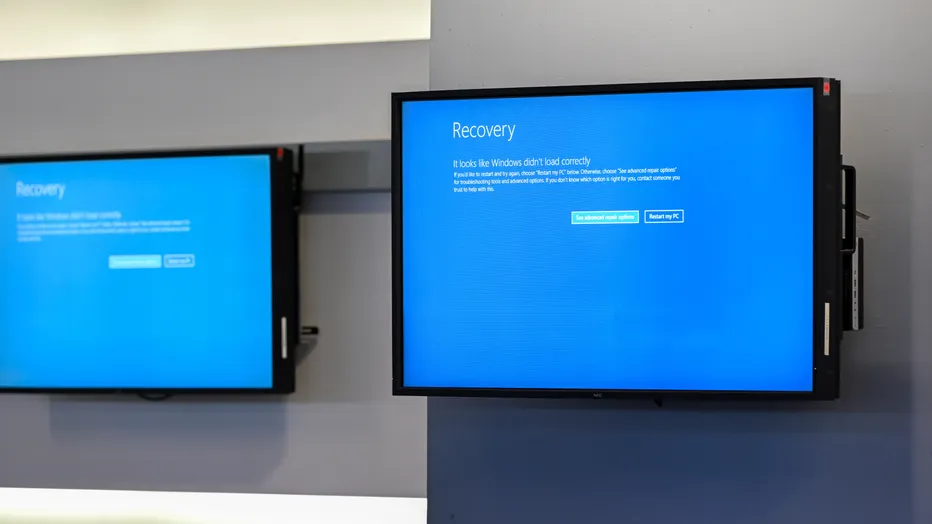Back in January, it was reported that the UK’s primary postal service and courier company, Royal Mail, halted all international mail and parcel deliveries due to a ransomware attack by Russian-backed ransomware gang, LockBit. The incident, confirmed by Royal Mail CEO Simon Thompson, caused severe service disruption and left businesses and customers feeling the financial impact.
According to the statement released by the company, the attack did not affect delivery and collection services within the UK, but international shipping services were suspended for over 6 weeks. The company advised customers to hold off on exports as items could not be dispatched to overseas destinations due to the ‘severe service disruption’ caused by the ransomware attack.
Royal Mail Ransomware Attack – The Official Stance
Initially, the UK business did not reveal the actual nature of the incident. Instead, they began investigating the causes and hired cybersecurity experts to investigate what went wrong and how it could have been avoided.
The incident also affected the Track and Trace website, causing delays and inconvenience for customers. The Click & Drop website was also experiencing payment issues, making it difficult for people to print postage labels from home.
The attack on Royal Mail highlights the vulnerability of mail delivery services to cyberthreats and the importance of implementing robust cybersecurity measures to protect against such incidents. The business’s reputation is at risk, and it must resolve the issue and restore normal operations quickly.
The incident is a stark reminder for people and organizations that they need to be vigilant and take necessary precautions to protect their sensitive information and transactions. This attack could have easily been avoided.
What Are Some Possible Causes for the Royal Mail Cyber Attack?
Criminals on the internet are always looking for easy ways to generate money. Large corporations and affluent businesspeople with access to sensitive information are their primary targets. If we stop to think about it, we are vulnerable to cyberattacks whenever we are in close contact with the internet.
Systems & Servers Were Easy-to-Access
Protecting a system from data breaches when using new technologies is usually challenging or impossible. Security can be put in danger only when hackers have simple access to the system. To obtain unauthorized access, hackers with advanced expertise can bypass access codes, retinal scans, and speech recognition. They could have easily gotten past the Royal Mail system’s firewall.
Lack of Cybersecurity Measures
The most likely cause could be a need for proper cybersecurity measures, such as outdated software and hardware, weak passwords, and employee training on cybersecurity best practices. Traditional blacklist antivirus is no longer optimal for protecting businesses against modern day ransomware attacks. Without an effective application allowlisting platform, Royal Mail was essentially inviting attackers into an unlocked door. Many government agencies around the world have acknowledged the importance of application allowlisting, yet businesses continue to fail to adapt to these new standards. As a result, they stay vulnerable to ransomware attacks.
Another possibility is that the attackers may have used a phishing email or a malicious link to access the company’s systems. This highlights the need for companies to have robust email filtering and spam blocking systems and educate employees on identifying and avoiding phishing attempts.
How Did the Cyberattack Affect Royal Mail’s Operations?
The suspension of international shipping services disrupted operations and caused significant revenue loss. Additionally, the attack has caused technical issues on the Track and Trace website and the Click & Drop website, causing inconvenience for customers and potentially leading to a loss of customer loyalty.
While the short term impacts are damaging, the long term impacts could potentially be catastrophic. The incident has led to reputational damage for them, as customers may question their ability to protect their information. Royal Mail also has to bear costs related to the investigation, clean-up, and any ransom that may have been paid, greatly impacting their financials.
What Were the Consequences of the Cyberattack On Customers & Businesses?
The attack on Royal Mail had consequences for customers, who have been affected by delays and inconvenience in tracking their parcels and letters. The incident may also have caused financial losses for customers whose shipments have been delayed or lost. The attack could have compromised sensitive information, such as personal and financial data, which may not even be known for years, if ever.
The incident also serves as a reminder for customers to be vigilant in protecting their sensitive information and transactions and to take necessary precautions, such as avoiding making payments through compromised websites and being vigilant about suspicious emails and messages.
Customers may also need more trust in Royal Mail’s services and may opt to use alternate shipping services in the future. This can lead to a loss of business for Royal Mail and potentially harm its reputation as a reliable and secure delivery service. Overall, the attack on Royal Mail has caused significant consequences for the company and its customers.
The incident highlights the importance of robust cybersecurity measures and the need for companies to be proactive in protecting their systems and sensitive information. Customers must also take necessary precautions to protect their sensitive data and transactions.
How Could the Attack on Royal Mail Have Been Prevented?
Businesses often risk losing business due to a simple system issue or breach. Since prevention against such crimes is vital, we’ll show you a few ways to stop ransomware attacks and how to defend your company properly:
Prioritize Endpoint Security
Endpoint security safeguards networks that are connected to devices via a small bridge. Security concerns arise when access points are connected to enterprise networks using laptops, tablets, and mobile devices. Endpoint protection software is required to safeguard these routes. Furthermore, the method of security is equally important. Traditional antivirus is no longer acceptable. Allowlisting is an absolutely crucial piece of any cybersecurity stack, and must be implemented by any organization seeking to protect themselves from ransomware.
Separate Personal Accounts for Employees
Each employee needs a unique login for each software and application. Making numerous contacts with people sharing your credentials could harm your company. You can lessen the number of assault fronts by providing each employee with their login. Users will only use their own set of logins and will only log in once each day. You’ll enjoy better usability as well as increased security.
Create Awareness Among Your Employees
Employees are one of the most popular methods by that fraudsters get access to your data. To access certain files or provide personal information, they will send phishing emails while pretending to be employees of your company. Links can seem genuine to an untrained eye, and it’s easy to fall into the trap. Knowledge is essential since untrained employees may subsequently fall into those traps.
What Role Does Cyber Insurance Play?
Cyber insurance coverage is designed to protect organizations from the financial impact of a cyberattack. It can provide coverage for responding to an attack, restoring lost or stolen data, and covering the cost of liability lawsuits.
However, it is essential to note that cyber insurance is not a protection guarantee. In some cases, insurance companies may deny a claim or dispute the extent of the damages. Additionally, even if a claim is paid out, the financial losses and reputational damage caused by a cyberattack can still be significant.
Moreover, organizations must be aware that the cyber insurance policy they are getting is tailored to their specific needs, as not all policies are created equal. Some may cover certain types of attacks or data breaches but not others. Organizations should carefully review their cyber insurance policy’s terms and conditions and understand their coverage before an attack occurs.
While cyber insurance is an important piece to consider when establishing your cybersecurity stack, it should only be considered as a last resort. Absolute prevention is the most important thing to consider.
Best Practices for Protecting Against Ransomware Attacks
In the wake of the ransomware attack on Royal Mail, businesses and individuals need to be aware of the best practices for protecting against such incidents. Some critical approaches include:
- Implement an application allowlisting platform: Applicaiton allowlisting platforms, like PC Matic Pro, prevent anything unknown from executing on your endpoints or network.
- Regularly updating software and hardware: Keeping software and hardware up-to-date can help protect against known vulnerabilities and prevent attackers from exploiting them.
- Implementing strong passwords: Complex and unique passwords can help prevent attackers from guessing or cracking them.
- Conducting regular employee training on cybersecurity best practices: Educating employees on identifying and avoiding phishing attempts and other attack methods can help prevent them from falling victim to a ransomware attack.
- Backing up data: Regularly backing up data can recover important information in an attack.
- Investing in cybersecurity insurance: Cybersecurity insurance can help cover the costs of an attack and provide assistance in the event of an incident.
- Regular vulnerability assessments and penetration testing can help prevent attackers from gaining access to sensitive information and disrupting operations.
- Be vigilant in protecting sensitive information and transactions, such as avoiding making payments through compromised websites and being vigilant about suspicious emails and messages.




